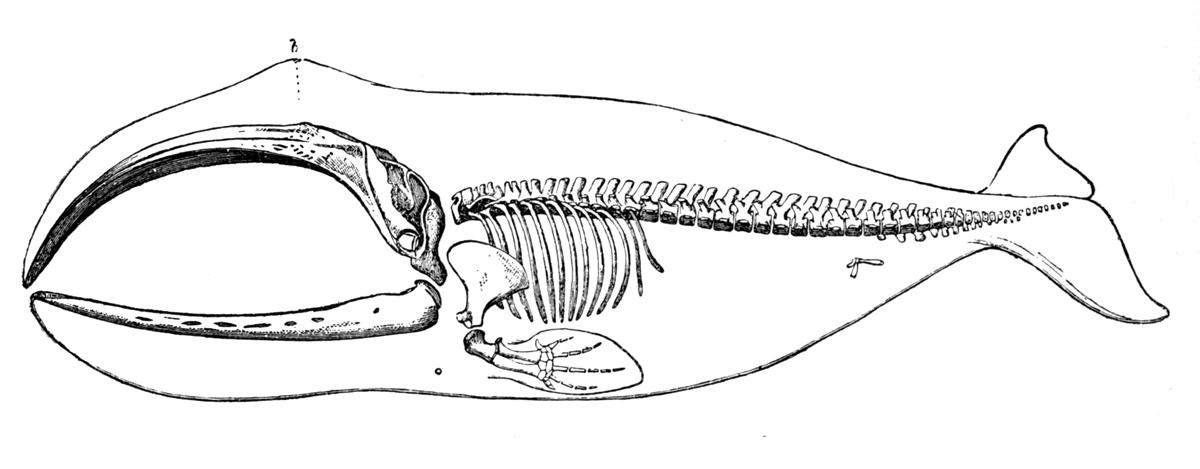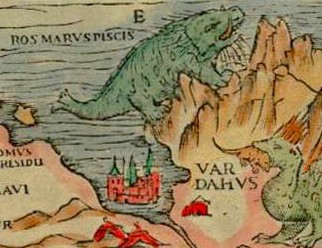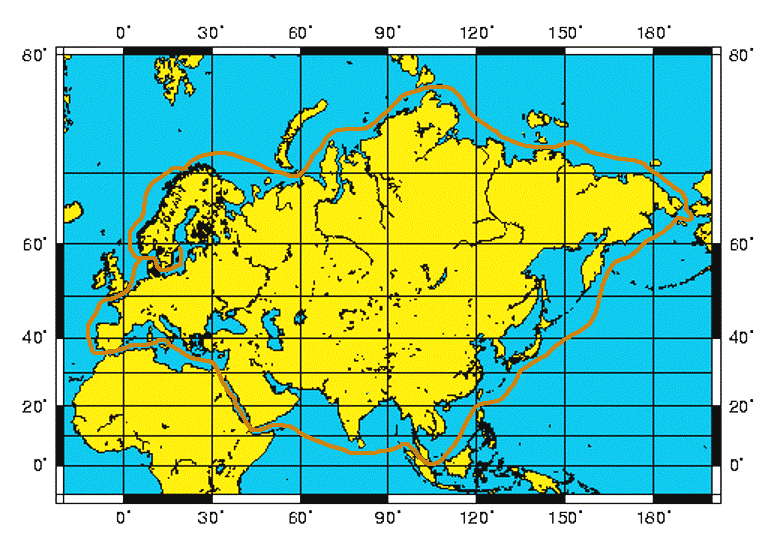|
Cape Vankarem
Cape Vankarem is a cape in the Chukchi Sea on the northern coast of Chukotka Autonomous Okrug, Chukotka between Cape Schmidt to the west and Kolyuchinskaya Bay to the east. It projects from a sandspit across the mouth of a lagoon into which flows the Vankarem River. At the mouth of the lagoon is the village of Vankarem, a Chukchi people, Chukchi settlement. The area around cape Vankarem is bounded by narrow beach ridges and Swale (landform), swales with numerous inlets and coastal lagoons. History East of Cape Vankarem, Adolf Erik Nordenskiöld observed remains of ancient dwellings, as well as numerous bones of reindeers and polar bear, bears. Walruses, and whales, including bowhead whale, bowhead and gray whales, are abundant in the waters off Cape Vankarem. Climate See also * Captain Vladimir Voronin References * Armstrong, T., The Russians in the Arctic, London, 1958. External links * Headlands of Chukotka Autonomous Okrug, Vankarem {{ChukotkaAutonomousOkrug-g ... [...More Info...] [...Related Items...] OR: [Wikipedia] [Google] [Baidu] |
Cape (geography)
In geography, a cape is a headland, peninsula or promontory extending into a body of water, usually a sea. A cape usually represents a marked change in trend of the Coast, coastline, often making them important landmarks in sea navigation. This also makes them prone to natural forms of erosion, mainly tidal actions, resulting in a relatively short geological lifespan. Formation Capes can be formed by Glacier, glaciers, Volcano, volcanoes, and changes in sea level. Erosion plays a large role in each of these methods of formation. Coastal erosion by waves and currents can create capes by wearing away softer rock and leaving behind harder rock formations. Movements of the Earth's crust can uplift land, forming capes. For example, the Cape of Good Hope was formed by tectonic forces. Volcanic eruptions can create capes by depositing lava that solidifies into new landforms. Cape Verde, (also known as Cabo Verde) is an example of a volcanic cape. Glaciers can carve out capes by erod ... [...More Info...] [...Related Items...] OR: [Wikipedia] [Google] [Baidu] |
Reindeers
The reindeer or caribou (''Rangifer tarandus'') is a species of deer with circumpolar distribution, native to Arctic, subarctic, tundra, boreal, and mountainous regions of Northern Europe, Siberia, and North America. It is the only representative of the genus ''Rangifer''. More recent studies suggest the splitting of reindeer and caribou into six distinct species over their range. Reindeer occur in both migratory and sedentary populations, and their herd sizes vary greatly in different regions. The tundra subspecies are adapted for extreme cold, and some are adapted for long-distance migration. Reindeer vary greatly in size and color from the smallest, the Svalbard reindeer (''R.'' (''t.'') ''platyrhynchus''), to the largest, Osborn's caribou (''R. t. osborni''). Although reindeer are quite numerous, some species and subspecies are in decline and considered vulnerable. They are unique among deer (Cervidae) in that females may have antlers, although the prevalence of antle ... [...More Info...] [...Related Items...] OR: [Wikipedia] [Google] [Baidu] |
Vankarem 1 2013-07-26
Vankarem (; Chukchi: , ''Vanḳarèman'') is a village ('' selo'') in Iultinsky District of Chukotka Autonomous Okrug, in the Far Eastern Federal District of Russia, situated on Cape Vankarem on the coast of the Chukchi Sea. Population: Municipally, Vankarem is subordinated to Iultinsky Municipal District and incorporated as Vankarem Rural Settlement. Demographics It is largely inhabited by indigenous Chukchi and Siberian Yupik people and has a population according to the most recent census results of 184, of whom 98 were male and 86 female, a reduction on an estimate made in 2006 of 210 people.Strogoff, p.126 History The origins of the name of the settlement are disputed. Some people believe that the name is associated with the traditional beliefs commonly held by indigenous Asian Arctic peoples which equate sea creatures closely with humans and that the name comes from the Chukchi word "Vankaremen" meaning Tusk People, as indigenous hunters referred to their prey as "Walrus ... [...More Info...] [...Related Items...] OR: [Wikipedia] [Google] [Baidu] |
Chukchi Children Cape Vankarem 1881 Nelson
Chukchi may refer to: *Chukchi people, a people of the Chukotka Peninsula in Siberia, Russia *Chukchi language, their Paleosiberian language *Chukchi Peninsula or Chukotka Peninsula, a peninsula in eastern Siberia *Chukchi Sea, a sea of the Arctic Ocean See also *Chukotka (other) Chukotka may refer to: *Chukotka Autonomous Okrug, a federal subject of Russia *Chukotka, alternative name of the Chukchi Peninsula The Chukchi Peninsula (also Chukotka Peninsula or Chukotski Peninsula; , ''Chukotskiy poluostrov'', short for ... * Chukotsky (other) {{Disambig, geo Language and nationality disambiguation pages ... [...More Info...] [...Related Items...] OR: [Wikipedia] [Google] [Baidu] |
Gray Whale
The gray whale (''Eschrichtius robustus''), also known as the grey whale,Britannica Micro.: v. IV, p. 693. is a baleen whale that migrates between feeding and breeding grounds yearly. It reaches a length of , a weight of up to and lives between 55 and 70 years, although one female was estimated to be 75–80 years of age. The common name of the whale comes from the gray patches and white mottling on its dark skin. Gray whales were once called devil fish because of their fighting behavior when hunted. The gray whale is the sole living species in the genus ''Eschrichtius''. It is the sole living genus in the family (biology), family Eschrichtiidae, however some recent studies classify it as a member of the family Rorqual, Balaenopteridae. This mammal is descended from filter-feeding whales that appeared during the Neogene. The gray whale is distributed in a Northeast Pacific (North American), and an endangered species, endangered Northwest Pacific (Asian), population. North Atla ... [...More Info...] [...Related Items...] OR: [Wikipedia] [Google] [Baidu] |
Bowhead Whale
The bowhead whale (''Balaena mysticetus''), sometimes called the Greenland right whale, Arctic whale, and polar whale, is a species of baleen whale belonging to the family Balaenidae and is the only living representative of the genus '' Balaena''. It is the only baleen whale endemic to the Arctic and subarctic waters, and is named after its characteristic massive triangular skull, which it uses to break through Arctic ice. Bowheads have the largest mouth of any animal representing almost one-third of the length of the body, the longest baleen plates with a maximum length of , and may be the longest-lived mammals, with the ability to reach an age of more than 200 years. The bowhead was an early whaling target. Their population was severely reduced before a 1966 moratorium was passed to protect the species. Of the five stocks of bowhead populations, three are listed as "endangered", one as " vulnerable", and one as "lower risk, conservation dependent" according to the IUCN Red ... [...More Info...] [...Related Items...] OR: [Wikipedia] [Google] [Baidu] |
Walrus
The walrus (''Odobenus rosmarus'') is a large pinniped marine mammal with discontinuous distribution about the North Pole in the Arctic Ocean and subarctic seas of the Northern Hemisphere. It is the only extant species in the family Odobenidae and genus ''Odobenus''. This species is subdivided into two subspecies: the Atlantic walrus (''O. r. rosmarus''), which lives in the Atlantic Ocean, and the Pacific walrus (''O. r. divergens''), which lives in the Pacific Ocean. Adult walrus are characterised by prominent tusks and whiskers, and considerable bulk: adult males in the Pacific can weigh more than and, among pinnipeds, are exceeded in size only by the two species of elephant seals. Walrus live mostly in shallow waters above the continental shelves, spending significant amounts of their lives on the sea ice looking for benthic bivalve molluscs. Walruses are relatively long-lived, social animals, and are considered to be a " keystone species" in the Arctic marine regio ... [...More Info...] [...Related Items...] OR: [Wikipedia] [Google] [Baidu] |
Polar Bear
The polar bear (''Ursus maritimus'') is a large bear native to the Arctic and nearby areas. It is closely related to the brown bear, and the two species can Hybrid (biology), interbreed. The polar bear is the largest extant species of bear and land carnivore, with adult males weighing . The species is sexually dimorphic, as adult females are much smaller. The polar bear is white- or yellowish-furred with black skin and a thick layer of fat. It is more slender than the brown bear, with a narrower skull, longer neck and lower shoulder hump. Its teeth are sharper and more adapted to cutting meat. The paws are large and allow the bear to walk on ice and paddle in the water. Polar bears are both terrestrial and Pagophily, pagophilic (ice-living) and are considered marine mammals because of their dependence on marine ecosystems. They prefer the annual sea ice but live on land when the ice melts in the summer. They are mostly carnivorous and specialized for preying on pinniped, se ... [...More Info...] [...Related Items...] OR: [Wikipedia] [Google] [Baidu] |
Adolf Erik Nordenskiöld
Nils Adolf Erik Nordenskiöld (; 18 November 183212 August 1901) was a Finland-Swedish aristocrat, geologist, mineralogist and Arctic explorer. He was a member of the noble Nordenskiöld family of scientists and held the title of a friherre (baron). Born in the Grand Duchy of Finland in the Russian Empire, he was forced to move to Sweden in 1857 due to his political activity, where he became a member of the Parliament of Sweden and of the Swedish Academy. He led the ''Vega'' Expedition along the northern coast of Eurasia in 1878–1879. This was the first complete crossing of the Northeast Passage. Initially a troubled enterprise, the successful expedition is considered to be among the highest achievements in the history of Swedish science. Nordenskiöld family The Nordenskiölds were an old Fenno-Swedish family, and members of the nobility. Nordenskiöld's father, Nils Gustaf Nordenskiöld, was a Finnish mineralogist, civil servant and traveller. He was also a member ... [...More Info...] [...Related Items...] OR: [Wikipedia] [Google] [Baidu] |
Chukotka Autonomous Okrug
Chukotka ( ; ), officially the Chukotka Autonomous Okrug, is the easternmost federal subjects of Russia, federal subject of Russia. It is an Autonomous okrugs of Russia, autonomous okrug situated in the Russian Far East, and shares a border with the Sakha Republic to the west, Magadan Oblast to the south-west, and Kamchatka Krai to the south, as well as a Maritime boundary, maritime border on the Bering Strait with the U.S. state of Alaska to the east. Anadyr (town), Anadyr is the largest types of inhabited localities in Russia, town and the administrative center, capital, and the easternmost settlement to have town status in Russia. It is the closest point from Russia to the United States, measuring at 88.51 kilometres or 55 miles. Chukotka is primarily populated by ethnic Russians, Chukchi people, Chukchi, and other Indigenous peoples of Siberia, indigenous peoples. It is the only autonomous okrug in Russia that is not included in, or subordinate to, another federal subject, ... [...More Info...] [...Related Items...] OR: [Wikipedia] [Google] [Baidu] |
Swale (landform)
A swale is a shady spot, or a sunken or marshy place. In US usage in particular, it is a shallow channel with gently sloping sides. Such a swale may be either natural or human-made. Artificial swales are often infiltration basins, designed to manage water runoff, filter pollutants, and increase rainwater infiltration. Bioswales are swales that involve the inclusion of plants or vegetation in their construction, specifically. On land The use of swales has been popularized as a rainwater-harvesting and soil-conservation strategy by Bill Mollison, David Holmgren, and other advocates of permaculture. In this context a swale is usually a water-harvesting ditch on contour, also called a ''contour bund''. Swales as used in permaculture are designed by permaculturalists to slow and capture runoff by spreading it horizontally across the landscape (along an elevation contour line), facilitating runoff infiltration into the soil. This archetypal form of swale is a dug-out, slo ... [...More Info...] [...Related Items...] OR: [Wikipedia] [Google] [Baidu] |
Chukchi People
The Chukchi, or Chukchee (, ''ḷygʺoravètḷʹèt, o'ravètḷʹèt''), are a Siberian ethnic group native to the Chukchi Peninsula, the shores of the Chukchi Sea and the Bering Sea region of the Arctic Ocean all within modern Russia. They speak the Chukchi language. The Chukchi originated from the people living around the Okhotsk Sea. According to several studies on genomic research conducted from 2014 to 2018, the Chukchi are the closest Asian relatives of the indigenous peoples of the Americas as well as of the Ainu people, being the descendants of settlers who neither crossed the Bering Strait nor settled the Japanese archipelago. Cultural history The majority of Chukchi reside within Chukotka Autonomous Okrug, but some also reside in the neighboring Sakha Republic to the west, Magadan Oblast to the southwest, and Kamchatka Krai to the south. Some Chukchi also reside in other parts of Russia, as well as in Europe and North America. The total number of Chukchi in t ... [...More Info...] [...Related Items...] OR: [Wikipedia] [Google] [Baidu] |






